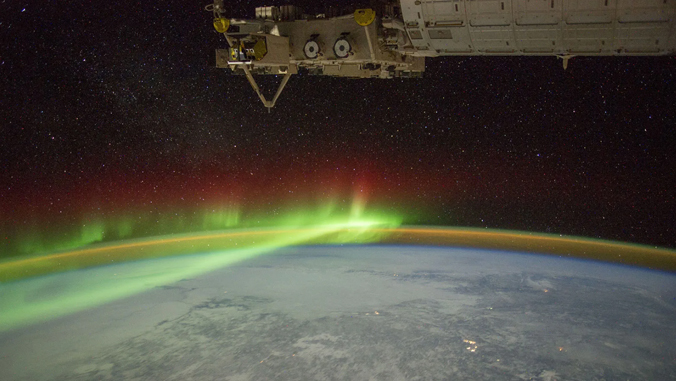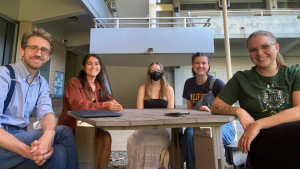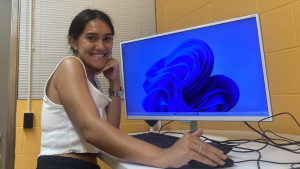
Undergraduates at the University of Hawaiʻi at Mānoa were inspired to build a giant antenna to explore hundreds of miles above the planet. The antenna, known as an ionosonde, project began after a lecture from atmospheric sciences Professor Giuseppe Torri about phenomena that can occur in the ionosphere, one of the highest layers of the Earth’s atmosphere.

The ionosphere plays an important role in radio transmission. Any disturbance in this region, such as those caused by the Sun (solar flares, geomagnetic storms, etc.), can severely affect radio transmissions and cause blackouts. Undergraduate students Arianna Corry, Emily Harris, Kyra Dyer and Grace McCoy, in the UH Mānoa School of Ocean and Earth Science and Technology (SOEST), teamed up to embark on a research journey to try and better understand this region.
“Some of us are long-time sci-fi fans—especially of the amazing work of Arthur Clarke—and we wanted a name that could encapsulate the sense of adventure that we all experienced reading the books that we love so much,” said Corry, who will be graduating this semester with a degree in atmospheric sciences and will start a master’s degree program at SOEST in the fall. “When Giuseppe mentioned that the branch of atmospheric science that studies the upper layers of the atmosphere is called ‘aeronomy,’ we immediately thought about the name Aeronauts.”
Getting their hands dirty
Certain radio signals emitted by various sources on the planet, such as over-the-horizon radars, are reflected back to Earth’s surface by the ionosphere.

“The ionosonde is essentially a sophisticated radio that allows us to pick up these signals and, through some complicated mathematics, reconstruct the altitude at which they were reflected,” said Harris, who is an Earth sciences undergraduate student.
With funding from the UH Mānoa Undergraduate Research Opportunities Program and Torri as their mentor, the students developed a project to build an ionosonde modeled from a design implemented and tested by Jens Floberg of UiT The Arctic University of Norway.
“It’s been a lot of fun learning about topics of the ionosphere, radio propagation, and GPS applications in class and on our own digging through academic literature and scientific forums,” said Dyer, who graduated in spring 2024 with a Global Environmental Science bachelor’s degree. “But to actually get our hands dirty and ‘see’ the ionosphere was a completely different experience that brought our appreciation for science to a completely different level.”
“Each of these extraordinary students has different skills that they bring to the table, and over the months they have been really great at interacting and leveraging each other’s skills in a collaborative and extremely productive way,” said Torri.
For more information, see SOEST’s website.
–By Marcie Grabowski

